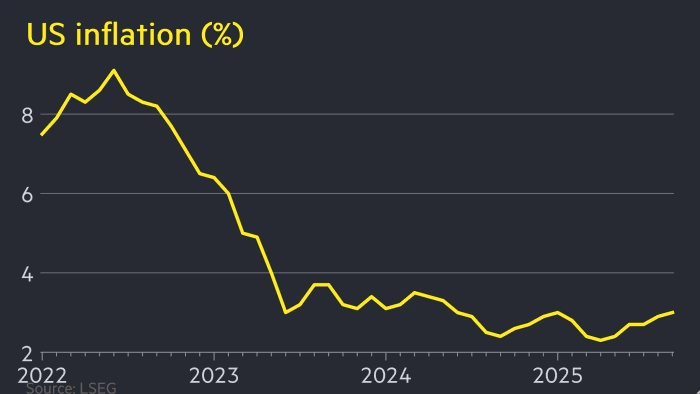Stay informed with free updates
Simply sign up to the US inflation myFT Digest — delivered directly to your inbox.
US inflation rose less than expected to 3 per cent in September, paving the way for the Federal Reserve to continue cutting interest rates when it meets next week.
Friday’s annual consumer price index figure from the Bureau of Labor Statistics was up from 2.9 per cent in August but below the expectations of 3.1 per cent among economists polled by Bloomberg.
The US dollar and Treasury yields fell slightly as the data release cemented expectations of rate cuts at the Fed’s two remaining meetings this year.
Its publication was delayed by a week due to the shutdown of the US government and the Trump administration said on Friday that, because of the closure, inflation figures would probably not be released next month.
Eswar Prasad, an economist at Cornell University, said Friday’s data, together with “signs of a weakening labour market, pretty much seals the deal for a rate cut” at the Fed’s next meeting.
The dollar was down 0.2 per cent against a basket of currencies, while the two-year Treasury yield, which moves inversely to prices, fell 0.04 percentage points to 3.46 per cent.
US stocks climbed, with the S&P 500 up 0.8 per cent in early trading.
The data release comes as the Fed is due to meet next on Tuesday and Wednesday, when it is expected to lower rates by a quarter point.
The central bank made its first reduction in borrowing costs this year at its last meeting in September, lowering rates by a quarter point to 4-4.25 per cent, and indicated more cuts would follow.
The Fed’s board has been split this year over how fast and far to cut rates as it weighs the effects of a slowing labour market against the potential for a surge in inflation in the wake of Donald Trump’s tariff drive.
Fed chair Jay Powell has come under intense pressure from Trump to lower borrowing costs since the US president returned to power in January.
White House spokesperson Karoline Leavitt said on Friday that inflation had come below expectations “thanks to President Trump’s economic agenda”.
Blaming the shutdown on Trump’s Democratic opponents, she added that it “will likely result in no October inflation report, which will leave businesses, markets, families and the Federal Reserve in disarray”.
Annual core inflation, which strips out volatile food and energy prices, rose to 3 per cent, less than the expected 3.1 per cent. Energy prices were up 2.8 per cent over the period, while food prices climbed 3.1 per cent.
Gasoline prices increased most compared with the previous month, rising 4.1 per cent.
Tom Simons, chief US economist at Jefferies, said Friday’s figure was “inconsistent with the expectation that tariffs would raise the price of goods”.
“There is little pass-through to consumers from tariffs,” he said. “I’m not sure if it can last indefinitely, but retailers are cautious about passing through price increases to consumers.”
But George Brown, senior economist at Schroders, said he would “caution against complacency” by the central bank because of the risk that tariffs could still push up prices in the months ahead.
“An inflation resurgence is at risk of being under-appreciated by the Fed and underpriced by the market,” he said.
